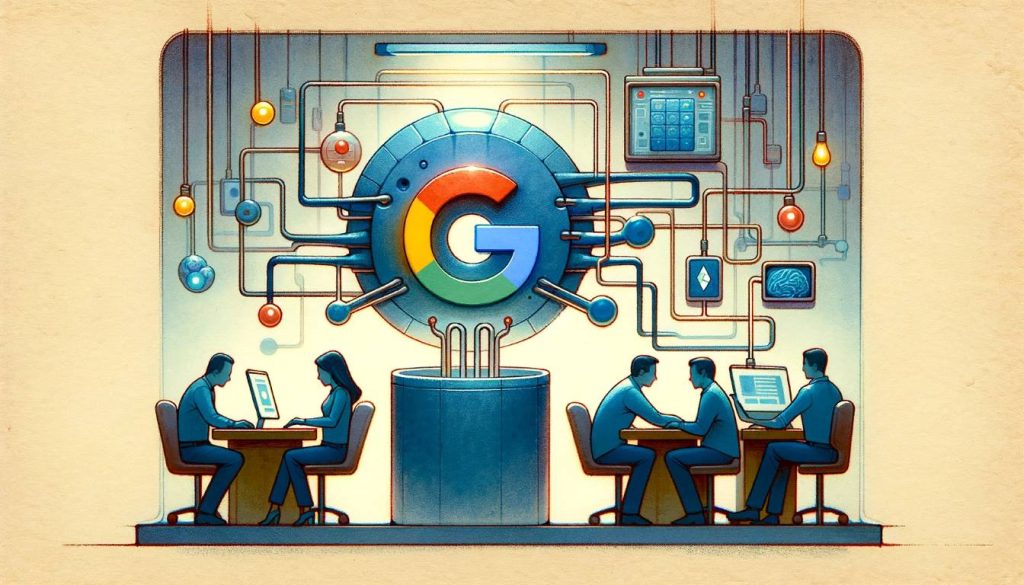Google has recently unveiled its latest contribution to the AI landscape – the 2B and 7B Google Gemma AI Models. These groundbreaking models emerge from the sophisticated research behind Gemini, Google’s flagship closed-source model, which has been a formidable contender against giants like OpenAI’s ChatGPT.
The Dawn of Accessible AI: Introducing Gemma 2B and 7B
Imagine having cutting-edge AI at your fingertips without breaking the bank or needing supercomputers. That’s what Google is offering with its new Gemma models. Developers can now tap into advanced language processing capabilities that are not only cost-effective but also boast impressive performance on key benchmarks, all while running smoothly on standard laptops and desktops.
Gemma Models: A New Era of Openness and Innovation
In stark contrast to the more restrictive Gemini, Google’s Gemma models are a leap towards openness, granting developers across the globe the freedom to experiment, innovate, and elevate their projects without being tethered to specific platforms or APIs. With this strategic move, Google is fostering a collaborative environment that encourages creativity and accelerates progress in AI development.
Responsible Development with Gemma’s AI Toolkits
Gemma isn’t just about powerful computing; it’s also about responsible innovation. The release of these models comes with “responsible AI toolkits” designed to help developers navigate ethical considerations by setting guidelines and debugging tools for safer applications. This reflects a proactive approach to mitigating risks associated with open-source models.
Gemma’s Technical Prowess: Outperforming Larger Counterparts
Don’t let their size fool you – despite being lightweight, both Gemma 2B and 7B variants shine in performance, outclassing much larger counterparts in various benchmarks. It’s an exciting time for developers who now have access to state-of-the-art tools without compromising on speed or efficiency.
Gearing Up for Diverse Applications: Multi-framework Support
Gemma extends its versatility by supporting multiple frameworks like JAX, PyTorch, TensorFlow through Keras 3.0, as well as compatibility across different devices including IoT and mobile. This multi-framework support ensures that no matter your preferred tools or hardware preferences, Gemma is equipped to integrate seamlessly into your workflow.
A Global Impact: Free Credits for Research and Development
To bolster innovation worldwide, Google is offering free access through platforms like Kaggle alongside generous cloud credits for researchers looking to push boundaries using Gemma. This initiative underscores Google’s commitment to democratizing AI research and making these powerful resources accessible regardless of organizational size.
The Road Ahead for Gemma Models
In conclusion, with their latest release of open-source AI models – Gemma 2B and 7B – Google is not just contributing another set of tools but reshaping how we approach machine learning development. By providing robust performance coupled with responsible use guidelines all under an open model framework, they’re setting a new standard that promises greater inclusivity and innovation within the tech community.
FAQs about Google Gemma AI Models
What are the Google Gemma AI Models?
The Google Gemma AI Models refer to the latest open-source artificial intelligence technology released by Google, specifically the Gemma 2B and 7B models. These models are based on the research behind Gemini, Google’s flagship closed-source model, and are designed to provide advanced language processing capabilities that are cost-effective and can run on standard computing hardware.
How do Gemma 2B and 7B compare to Google’s closed-source model Gemini?
Gemma 2B and 7B models differ from the closed-source Gemini in that they offer a more open approach, allowing developers greater freedom to experiment and innovate. Unlike Gemini, which is more restrictive, Gemma models enable usage without being tied to specific platforms or APIs, fostering a collaborative environment for AI development.
What makes Gemma models stand out against larger AI counterparts?
Gemma models stand out due to their impressive performance in key benchmarks despite their lightweight nature. Both 2B and 7B variants have been shown to outperform much larger counterparts, offering state-of-the-art tools without compromising speed or efficiency for developers.
Are there any responsible AI toolkits included with Gemma?
Yes, with the release of the Gemma models, Google has provided “responsible AI toolkits.” These toolkits aim to help developers navigate ethical considerations by providing guidelines and debugging tools for safer applications of the technology.
In what ways does Gemma support diverse applications in AI development?
Gemma supports diverse applications by offering multi-framework support for JAX, PyTorch, TensorFlow through Keras 3.0, ensuring compatibility across various devices including IoT and mobile. This versatility allows it to integrate seamlessly into different workflows regardless of developers’ preferred tools or hardware preferences.
How is Google promoting global impact with its new open-source AI models?
To promote a global impact in AI research and development, Google is providing free access through platforms like Kaggle as well as generous cloud credits for researchers utilizing the Gemma models. This initiative highlights Google’s commitment to democratizing access to powerful AI resources worldwide.

